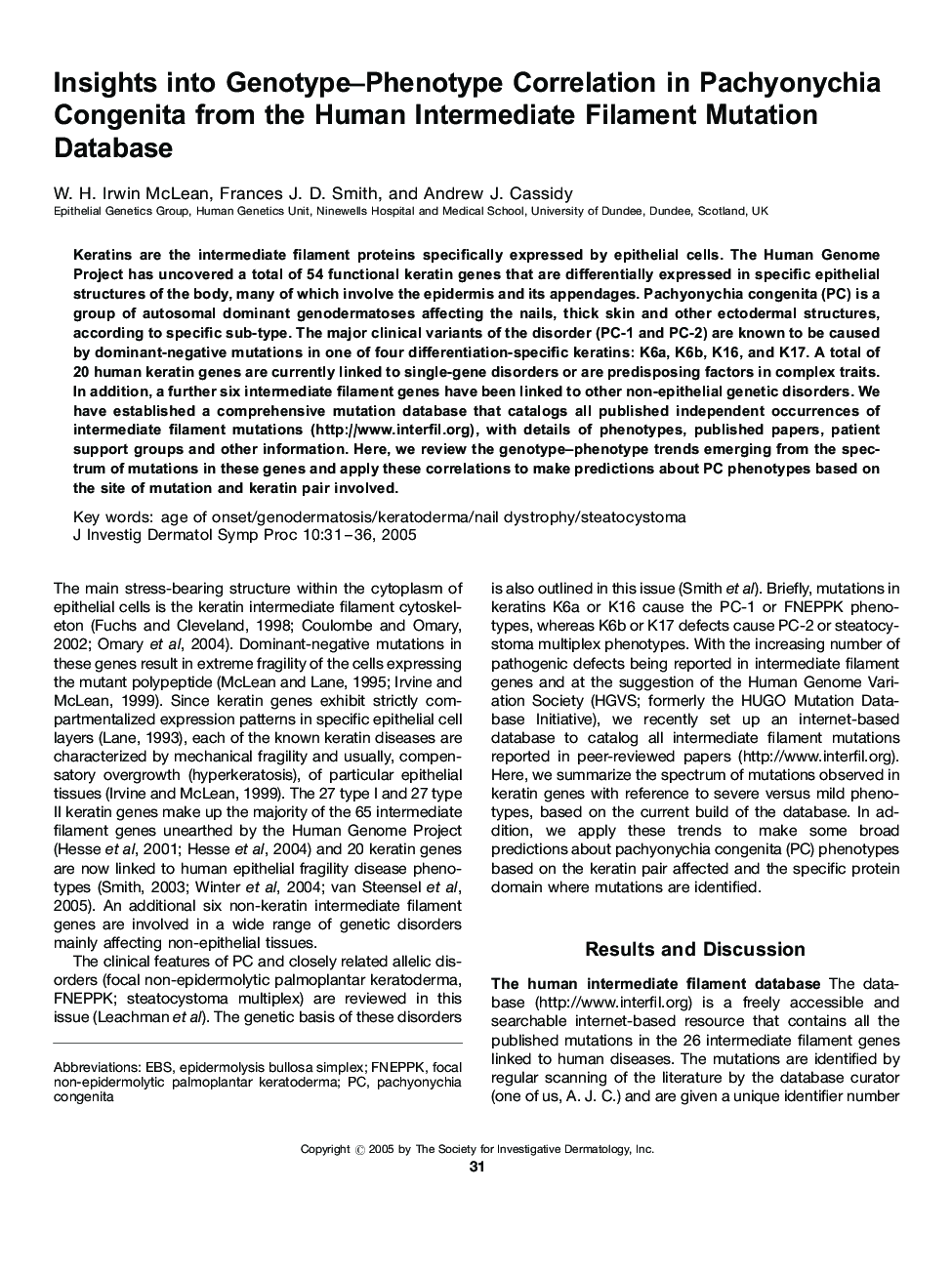| Article ID | Journal | Published Year | Pages | File Type |
|---|---|---|---|---|
| 9232411 | Journal of Investigative Dermatology Symposium Proceedings | 2005 | 6 Pages |
Abstract
Keratins are the intermediate filament proteins specifically expressed by epithelial cells. The Human Genome Project has uncovered a total of 54 functional keratin genes that are differentially expressed in specific epithelial structures of the body, many of which involve the epidermis and its appendages. Pachyonychia congenita (PC) is a group of autosomal dominant genodermatoses affecting the nails, thick skin and other ectodermal structures, according to specific sub-type. The major clinical variants of the disorder (PC-1 and PC-2) are known to be caused by dominant-negative mutations in one of four differentiation-specific keratins: K6a, K6b, K16, and K17. A total of 20 human keratin genes are currently linked to single-gene disorders or are predisposing factors in complex traits. In addition, a further six intermediate filament genes have been linked to other non-epithelial genetic disorders. We have established a comprehensive mutation database that catalogs all published independent occurrences of intermediate filament mutations (http://www.interfil.org), with details of phenotypes, published papers, patient support groups and other information. Here, we review the genotype-phenotype trends emerging from the spectrum of mutations in these genes and apply these correlations to make predictions about PC phenotypes based on the site of mutation and keratin pair involved.
Related Topics
Health Sciences
Medicine and Dentistry
Dermatology
Authors
W. H. Irwin McLean, Frances J.D. Smith, Andrew J. Cassidy,
